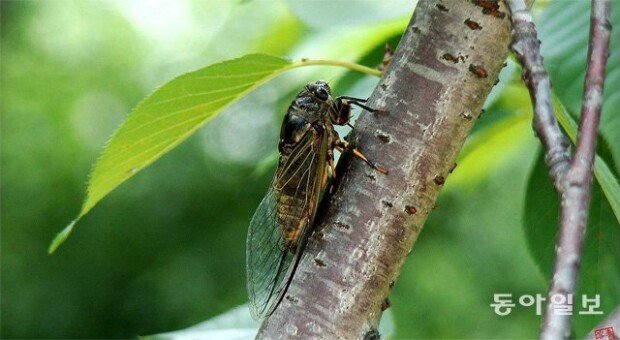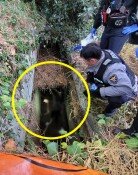Cicada noises make people hard to sleep at night
Cicada noises make people hard to sleep at night
Posted August. 06, 2019 07:41,
Updated August. 06, 2019 07:41

Cicadas’ singing in the summer in Korea is nothing new but they have become louder and are making noises both in the day and at night for the recent years. This is because Korean blackish cicadas (picture), which originate from Southeast Asia, have rapidly increased in number in urban areas since 2000. Unlike robust cicadas, which are usually active at temperatures below 27 degrees Celsius, Korean blackish cicadas make noises as loud as 75-95 decibels at temperatures above 27 degrees Celsius. This is much higher than the noise standard of residential areas (65dB during the day and 60dB at night).
Cicada noise is more prevalent in downtown as a result of climate change, urban heat island effect, and tropical night. “Korean blackish cicadas were nowhere to be found here in Korea 30 years ago,” said Jang E-kwon, professor of Eco Science at Ewha Woman’s University. “They are now often found in urban areas such as Yeouido, Banpo, and Jamsil, where they have heat island effect with so many buildings street trees.” In particular, cicadas have started to sing during the day and night in recent years due to tropical nights, when the lowest temperature at night is above 25 degrees Celsius, and lights from signs and streetlamps.
It is singing noises that differentiate Korean blackish cicadas from robust cicadas. According to the Ministry of Environment, robust cicadas usually sing from 4 a.m. to 9 a.m., when the temperature is relatively low. Male robust cicadas make rhythmic noises to court female robust cicadas. On the other hand, Korean blackish cicadas, which are active at higher temperatures, make more loud noises.
Humans can detect sounds in a frequency range from about 4 to 6 kHz. The sounds of cicadas are considered noise to humans as Korean blackish cicadas sing at 4kHz and robust cicadas sing at 6kHz.
kej09@donga.com



![“설거지해도 그대로”…냄비 ‘무지개 얼룩’ 5분 해결법 [알쓸톡]](https://dimg.donga.com/c/138/175/90/1/wps/NEWS/IMAGE/2026/01/15/133164664.3.png)


![“인천공항서 50만원 날렸다”…‘여행 필수템’ 이것 쓰레기 통에 [알쓸톡]](https://dimg.donga.com/c/138/175/90/1/wps/NEWS/IMAGE/2026/01/16/133171330.2.jpg)
